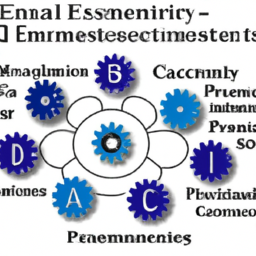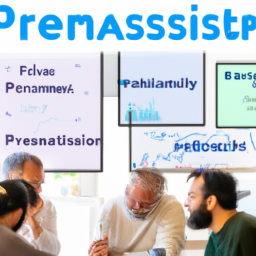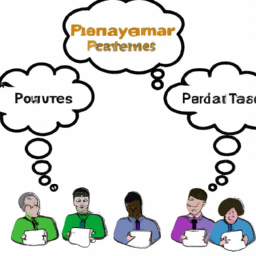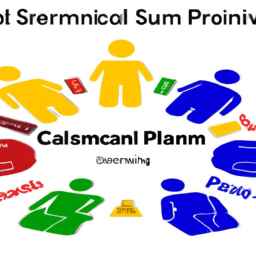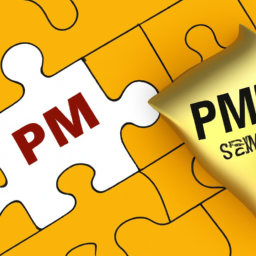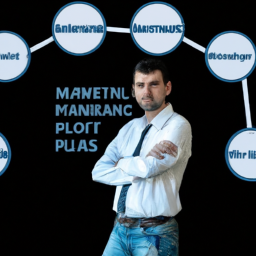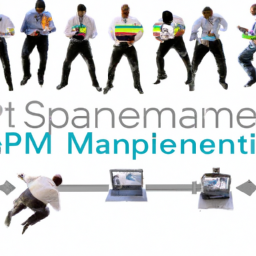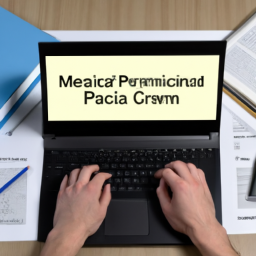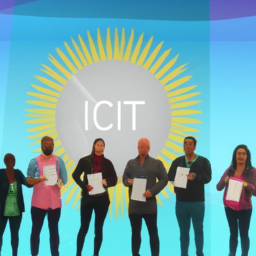Picture yourself on the path to success, confidently navigating the complex world of the PSM II exam. With the right strategies, you can conquer this challenge and elevate your agile career to new heights.
In this article, we will guide you through the top strategies for mastering the PSM II exam. From understanding the exam structure to leveraging agile principles, we will provide you with actionable steps and practical advice to ensure your success.
Are you ready to take your agile expertise to the next level? Let’s dive in!
Key Takeaways
- Understand the PSM II exam format and the importance of carefully reading each question and options before selecting an answer.
- Develop effective study habits such as creating a consistent study schedule, breaking study sessions into smaller chunks, and actively engaging with the material.
- Practice with mock exams to simulate the exam environment, think quickly and critically, and review explanations for each question to understand the reasoning behind correct answers.
- Analyze and learn from mistakes by reviewing incorrect answers, identifying patterns or common themes in mistakes, and developing a plan to address weak areas.
Understanding the PSM II Exam Structure
Understanding the PSM II exam structure can be essential for success. The PSM II exam format consists of multiple-choice questions and is designed to test your knowledge and understanding of advanced Scrum concepts and practices.
To effectively manage your time during the exam, it is important to have a clear understanding of the structure. Start by carefully reading each question and all the options before selecting your answer. Avoid spending too much time on difficult questions and come back to them later if needed. Use the process of elimination to narrow down your choices and increase your chances of selecting the correct answer.
By employing these time management strategies, you can ensure that you allocate sufficient time to each question and maximize your chances of success in the PSM II exam.
Now, let’s explore the next section about developing effective study habits.
Developing Effective Study Habits
To develop effective study habits, you should start by creating a consistent schedule and sticking to it. Set aside dedicated time each day for studying, and make it a priority.
Here are three strategies to help you make the most of your study time:
-
Break it down: Break your study sessions into smaller, manageable chunks. This will help you stay focused and make the material easier to digest.
-
Stay active: Engage with the material actively by taking notes, asking questions, and discussing concepts with others. Active learning promotes better understanding and retention.
-
Manage distractions: Minimize distractions by finding a quiet and comfortable study environment. Turn off notifications on your phone and limit access to social media during your study sessions.
Practicing With Mock Exams
Practicing with mock exams can be a helpful way to prepare for the real thing and improve your test-taking skills. Timed practice allows you to simulate the pressure of the actual exam, helping you become more comfortable with the time constraints and enhance your ability to think quickly and critically. By setting a timer and completing practice exams within a specific timeframe, you train yourself to manage your time effectively during the real test.
In addition to timed practice, it is crucial to review the explanations provided for each question. This step helps you understand the reasoning behind the correct answers and identify any gaps in your knowledge. By thoroughly reviewing the explanations, you can learn from your mistakes and strengthen your understanding of the subject matter. This will not only improve your performance on the mock exams but also increase your chances of success on the actual test.
Analyzing and Learning From Mistakes
When reviewing your mock exam results, take the time to carefully analyze and learn from your mistakes. Reflection techniques can help you identify weak areas and improve your performance. Here are three key steps to follow:
- Review each question you answered incorrectly and understand why you chose the wrong answer.
- Identify any patterns or common themes in your mistakes to pinpoint specific areas for improvement.
- Develop a plan to address these weak areas, such as studying related topics or seeking additional guidance.
By taking the time to reflect on your mistakes, you can learn valuable lessons and enhance your understanding of the exam material. These insights will guide you in your preparation and increase your chances of success.
Now, let’s explore how leveraging agile principles can further boost your exam performance.
Leveraging Agile Principles for Exam Success
Leveraging agile principles can greatly enhance your performance on exams. Agile principles emphasize collaboration, continuous improvement, and taking action to achieve results. When it comes to exam preparation, adopting an agile mindset can help you maximize your learning potential and enhance your chances of success.
One key aspect of agile principles is collaborative learning. Engaging with fellow students, forming study groups, and discussing concepts can deepen your understanding and provide different perspectives. By sharing ideas and knowledge, you can collectively learn and grow.
Continuous improvement is another vital component of agile principles. Treat each exam as an opportunity to learn from your mistakes and make adjustments. Reflect on your performance, identify areas for improvement, and take action to fill any knowledge gaps. Regularly review and revise your study plan to ensure you are progressing towards your goals.
Frequently Asked Questions
What Is the Passing Score for the PSM II Exam?
The passing score for the PSM II exam is 85%.
It is important to note that the exam duration is 90 minutes.
To succeed in this exam, you need to focus on understanding the Scrum framework, roles, events, and artifacts.
Additionally, practicing with sample questions and taking mock exams can help you familiarize yourself with the format and improve your time management skills.
Remember to review the Scrum Guide thoroughly and apply your knowledge in real-world scenarios to increase your chances of success.
Are There Any Prerequisites for Taking the PSM II Exam?
Before diving into the strategies for success, let’s address the question of prerequisites for the PSM II exam.
Thankfully, there are no prerequisites for taking this exam. However, it is highly recommended that you have a good understanding of Scrum principles and practices, as well as practical experience in applying them.
To maximize your chances of success, focus on thorough preparation techniques and familiarize yourself with the exam format and content.
Good luck on your PSM II journey!
How Long Is the PSM II Exam?
The PSM II exam is a timed assessment that requires effective time management skills. It is important to understand the exam format to maximize your performance.
The duration of the exam is not explicitly mentioned without the context of ‘Mastering the PSM II Exam: Top Strategies for Success.’ However, as an agile coach/scrum master, you should prioritize time management during the exam and familiarize yourself with the format to ensure you utilize your time efficiently and effectively.
Can I Use Any External Resources or References During the Exam?
During the PSM II exam, you cannot use any external resources or references. The exam is designed to test your knowledge and understanding of Scrum principles and practices, so it’s important to rely solely on your own expertise.
The duration of the PSM II exam is 90 minutes, and it consists of multiple-choice questions and case study scenarios. Remember to stay focused and prepared, as this will increase your chances of success.
Is the PSM II Exam Available in Multiple Languages?
Yes, the PSM II exam is available in multiple languages. This means that you can choose to take the exam in a language that you’re most comfortable with.
The availability of different languages allows for a wider reach and inclusion of individuals from various backgrounds and regions.
It’s important to note that the exam duration remains the same regardless of the language chosen. So, you can confidently prepare for the exam knowing that language availability won’t affect the allotted time.
Conclusion
To master the PSM II exam, it’s essential to understand the exam structure. Develop effective study habits, practice with mock exams, analyze and learn from mistakes, and leverage agile principles.
As an agile coach or scrum master, your writing should be clear and concise. Focus on conveying information in a straightforward and easy-to-understand way. It should also be collaborative, using inclusive language and encouraging feedback and input from others.
Lastly, your writing should be action-oriented. Provide practical guidance and inspire others to take action and continuously improve.

